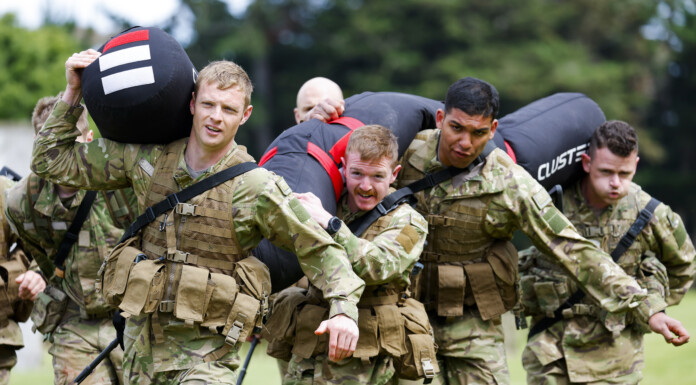In a far-from-perfect world, we must sometimes accept the very high price we pay for what we treasure most. Namely, our way of life.
We pay the ultimate price as we seek to protect our shores, even if it means sending our troops to protect shores in other parts of that imperfect world to do so.
It never seems fair, and the price can be impossible to justify, but we have been paying it for well over 100 years.
Last week’s events off Australia’s east coast reminded us that lives are sometimes lost far from the theatre of war. In this case, it was a training exercise.
Indeed, the search continues for four young Australian defence force members after their army helicopter went down during a large-scale military exercise that New Zealand troops are also part of.
The Taipan helicopter crashed into the ocean off Queensland, near Hamilton Island, on Friday.
It was completing its training mission as part of Exercise Talisman Sabre with a second army helicopter that immediately began a search and rescue mission. Some debris from the chopper has been recovered, but the main cabin of the helicopter has not yet been found.
An air safety investigation team has arrived in Queensland to examine the scene. While the Australian Army hierarchy has not shifted from its description of the current search and rescue, there is an inevitable and awful feeling that the words “recovery” will soon be part of subsequent media releases.
Australia’s Defence Personnel Minister Matt Keogh said the main focus of the ongoing search operation is to find the four men.
The NZ Army forms the largest part of the New Zealand Defence Force [NZDF] contingent, with nearly 250 soldiers participating.
The NZDF contribution includes two NZ Army infantry platoons with 20 light armoured vehicles, nine medium heavy operation vehicles, an RNZAF rotary wing detachment with three NH90 helicopters, hydrographers from the RNZN, as well as other staff.
So this so-called Talisman Sabre military exercise is not a small thing.
Along with the New Zealand contribution, military personnel from the United States, Fiji, France, Indonesia, Japan, Republic of Korea, Papua New Guinea, Tonga, Britain, Canada and Germany are participating.
A description from official circles doesn’t require a WWII code breaker to read between the lines.
It reads thus: Talisman Sabre is the largest bilateral military exercise between Australia and the United States advancing a free and open Indo-Pacific by strengthening relationships and interoperability among key allies and enhancing our collective capabilities to respond to a wide array of potential security concerns.
In other words, we want the likes of China and North Korea – and any friends they may have – to think twice before going where they are not invited.
I can’t imagine what our part of the exercise in Australia cost in dollar terms, but whatever that number is, it won’t be as high as the cost of four young lives.
And as we assess who or what poses the biggest threat to us, we need to do no more than look to the skies. It’s the bloody weather.


